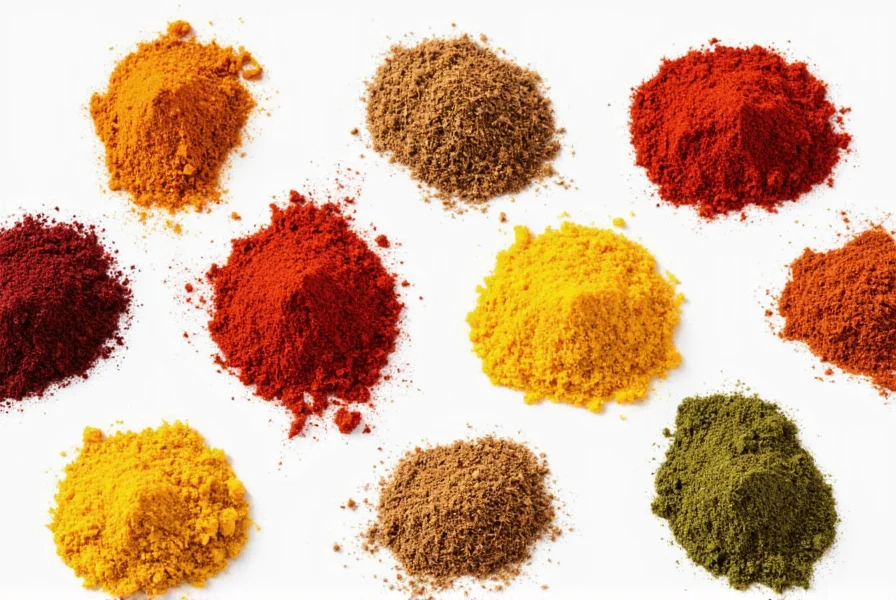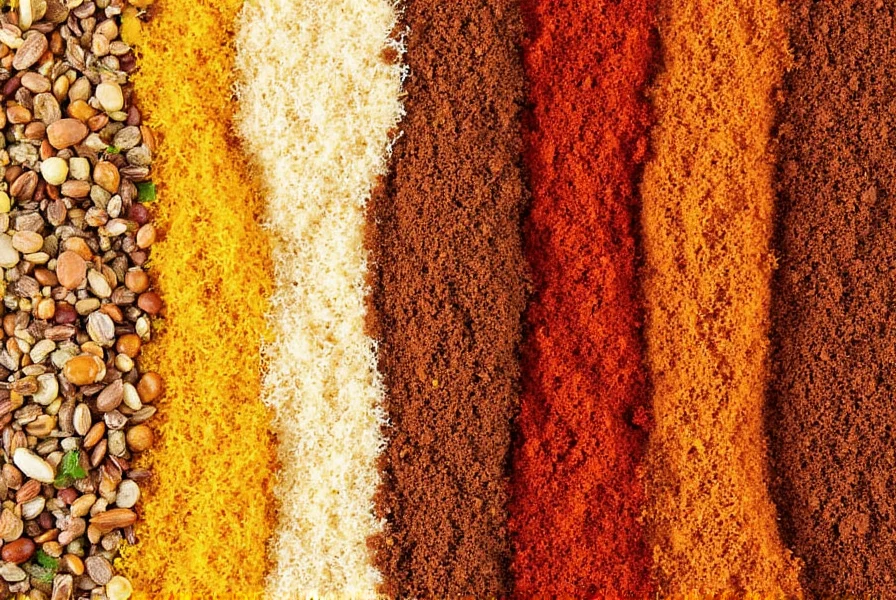Paella Spices: From Saffron to Smoked Paprika – 7 Must-Have Flavors for Authentic Spanish Magic
Are you ready to transform your kitchen into a sun-drenched Mediterranean terrace? Whether you're a culinary pro or an adventurous home cook, mastering paella spices can take your dish from ordinary to extraordinary. In this guide, we’ll uncover the secrets behind Spain’s most iconic rice dish and show you how to elevate your next paella with the right blend of aromatics and seasonings.
Table of Contents
- Introduction: The Soul of Paella Lies in Its Spices
- Top 7 Essential Paella Spices You Can’t Skip
- Saffron vs. Turmeric vs. Annatto: What’s the Real Difference?
- Buying Guide: How to Choose the Best Paella Spices
- Pro Tips & Tricks for Using Paella Spices Like a Chef
- Conclusion: Spice Up Your Paella Game Today!
Introduction: The Soul of Paella Lies in Its Spices
Paella is more than just rice—it's a celebration of flavor, culture, and tradition. Originating from Valencia, Spain, paella is traditionally cooked in a wide, shallow pan over an open flame. But what gives it that unforgettable taste and golden hue? The answer lies in its spice blend.

The magic of paella begins with the sofrito—a slow-cooked base of onions, garlic, and tomatoes—and reaches its peak when the spices are added. From saffron to smoked paprika, each ingredient plays a role in creating layers of depth and warmth. Let’s dive into the core components of any authentic paella spice mix.
Top 7 Essential Paella Spices You Can’t Skip
Whether you're making Valencian, seafood, or mixed paella, here are the seven spices every good recipe should include:
- Saffron – The King of Color and Flavor
- Smoked Paprika (Pimentón de la Vera) – Adds Deep Smokiness
- Garlic Powder – Aromatic Base Builder
- Dried Rosemary – Earthy Herbal Note
- Bay Leaves – Subtle Bitterness and Depth
- Black Pepper – Enhances All Other Flavors
- Sea Salt – Balances Sweet and Umami Notes
Let’s break down each spice and why it deserves a spot in your pantry.
1. Saffron: Liquid Gold for Flavor and Color
No discussion about paella spices would be complete without mentioning saffron. This precious spice comes from the stigmas of the Crocus sativus flower and is one of the most expensive ingredients in the world by weight. But a little goes a long way!
| Spice | Flavor Profile | Visual Impact | Common Substitutes |
|---|---|---|---|
| Saffron | Elegant, floral, slightly sweet | Radiant golden-yellow | Turmeric, annatto |
2. Smoked Paprika: The Smoky Heartbeat of Spanish Cooking
Smoked paprika, or pimentón de la Vera, is made by drying peppers over oak fires. It brings a deep, smoky aroma that mimics the outdoor fire used in traditional paella cooking.
There are three main varieties:
- Dulce (Sweet): Mild and sweet
- Agridulce (Bittersweet): Balanced heat
- Picante (Hot): Spicy kick
For paella, dulce is the safest bet unless you’re aiming for some extra fire.
3. Garlic Powder: The Secret Weapon for Layered Flavor
Fresh garlic is great, but garlic powder blends seamlessly into the rice and ensures even seasoning throughout. Plus, it dissolves easily in liquid without burning like minced garlic can.
4. Dried Rosemary: An Herb That Packs a Punch
Rosemary adds a resinous, pine-like note that complements the seafood or chicken often found in paella. Crush a few sprigs or add a pinch of dried rosemary to the broth for a subtle aromatic lift.
5. Bay Leaves: The Silent Flavor Boosters
Bay leaves are often overlooked, but they lend a gentle bitterness that balances out the richness of meats and seafood in paella. They’re best removed before serving, though!
6. Black Pepper: Not Just for Salty Kicks
Whole black peppercorns simmer in the broth, infusing the rice with warm, earthy undertones. Unlike salt, which seasons immediately, pepper enhances flavor gradually during cooking.
7. Sea Salt: The Foundation of Good Taste
Use coarse sea salt to season the broth as it simmers. It melts slowly and evenly, avoiding the risk of oversalting your rice at the end.
Saffron vs. Turmeric vs. Annatto: What’s the Real Difference?
Since real saffron can be hard to find or too expensive, many cooks turn to substitutes. Let’s compare them side-by-side:
| Spice | Flavor | Color | Price | Best For |
|---|---|---|---|---|
| Saffron | Delicate, floral | Glowing gold | $$$$$ | Authentic paella |
| Turmeric | Earthy, bitter | Brilliant yellow | $ | Cheap color boost |
| Annatto | Nutty, sweet | Warm orange | $$ | Mexican or Caribbean dishes |
If you're going for authenticity, nothing beats saffron. However, turmeric and annatto can work well if you're budget-conscious or experimenting with fusion styles.
Buying Guide: How to Choose the Best Paella Spices
Not all paella spice blends are created equal. Some are pre-mixed powders sold in supermarkets, while others are artisan blends crafted for chefs. Here’s how to choose wisely:
Look for Quality Indicators
- Pure Ingredients: Avoid additives like MSG, anti-caking agents, or artificial flavors.
- Origin: Spices from Spain or regions known for paella (like Valencia) are more likely to offer authentic flavor profiles.
- Whole Spices vs. Pre-Ground: Whole spices like bay leaves or peppercorns retain freshness longer. Grind them yourself for optimal potency.
Top 3 Paella Spice Blends Reviewed
| Name | Key Features | Pros | Cons | Best For |
|---|---|---|---|---|
| La Flor de Valencia Paella Spice Blend | Contains real saffron threads, smoked paprika, and herbs | Rich flavor, high-quality ingredients | Pricier than generic blends | Traditionalists and foodies |
| Goya Sazón con Saffron | Pre-ground, includes coriander and turmeric | Affordable, easy to use | Lacks smoky paprika | Quick meals and beginners |
| Simply Organic Spanish Seasoning | Organic ingredients, no fillers | Clean label, versatile | Needs additional saffron | Health-conscious cooks |
DIY Tip: Make Your Own Paella Spice Mix
Want full control over your flavor profile? Try this simple homemade blend:
- 1 tsp smoked paprika (dulce) - 1/4 tsp ground saffron or 10 threads soaked in warm water - 1/2 tsp garlic powder - 1/2 tsp sea salt - 1/4 tsp black pepper - Pinch of dried rosemary
Pro Tips & Tricks for Using Paella Spices Like a Chef
Now that you know the key players, let’s talk about technique. Here’s how to get the most out of your paella spices:
- Toasted Spices First: Toast whole spices like peppercorns and bay leaves in oil before adding the sofrito. This releases their essential oils and intensifies flavor.
- Saffron Steeped in Broth: Never toss saffron directly into the pot. Soak it in hot broth or water first to extract maximum color and aroma.
- Add Paprika Late: Smoked paprika can become bitter if overcooked. Add it after the sofrito and before the rice goes in.
- Layer the Herbs: Crush rosemary gently between your fingers before sprinkling it in. This helps release its volatile oils.
- Season Gradually: Taste the broth before adding salt. Depending on other ingredients (like chorizo), you may need less.
Conclusion: Spice Up Your Paella Game Today!
Mastering the art of paella spices isn't just about following a recipe—it's about understanding the harmony between aroma, color, and flavor. Whether you opt for a premium spice blend or craft your own mix, choosing the right ingredients will bring your paella closer to the authentic taste of Spain.
So, next time you fire up the paellera, don’t hold back on the spices. Embrace saffron’s golden glow, paprika’s smoky kiss, and rosemary’s herbal charm. With these essentials in your arsenal, you’ll be turning out restaurant-quality paella in no time.
And remember—great paella starts not with the rice, but with the spices that bring it to life. Now go impress your friends with your new-found spice wisdom!











 浙公网安备
33010002000092号
浙公网安备
33010002000092号 浙B2-20120091-4
浙B2-20120091-4